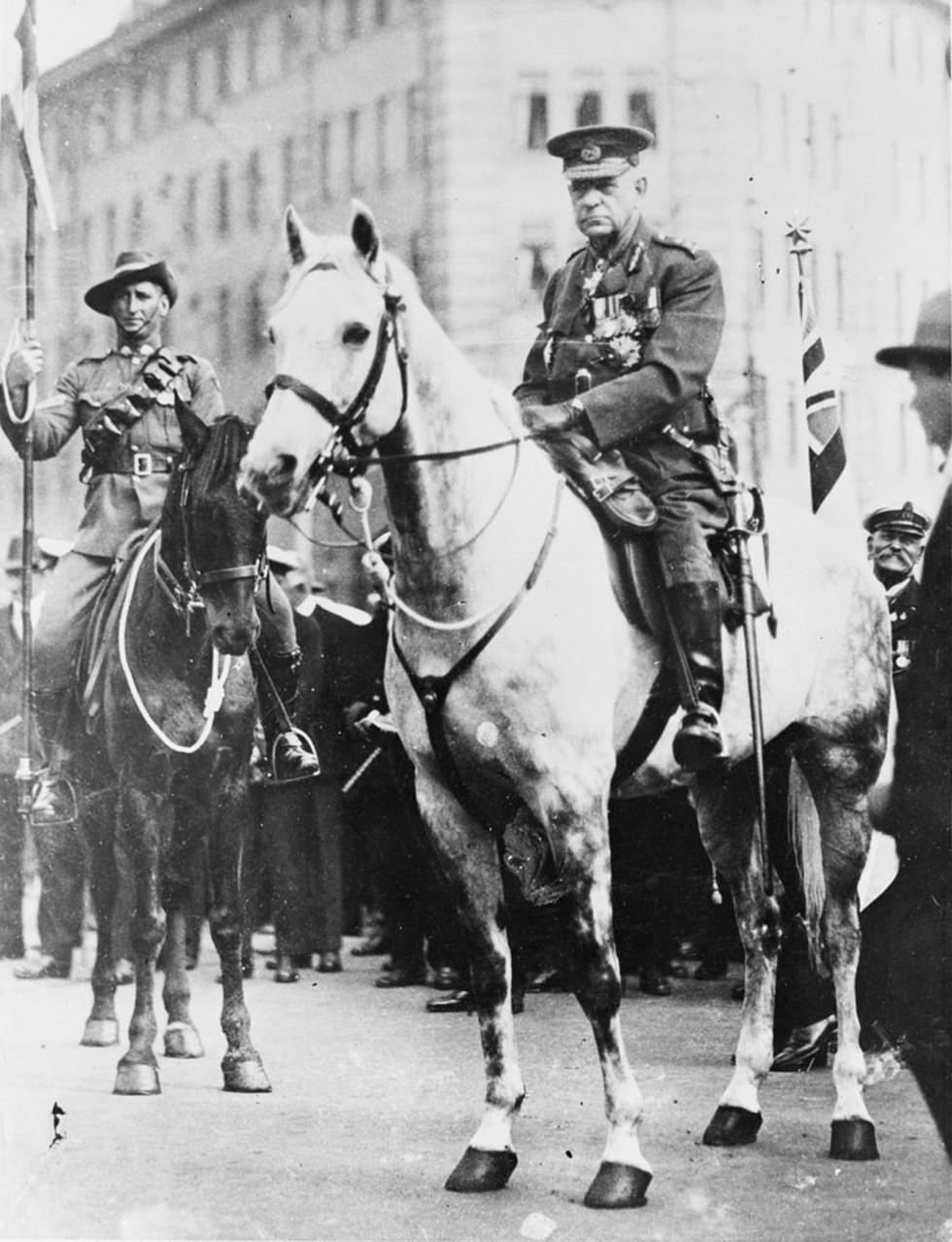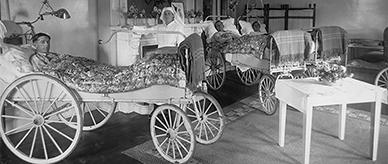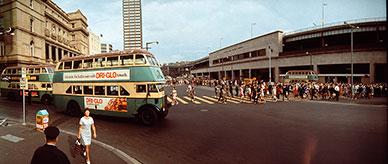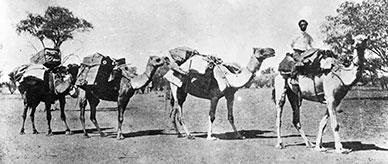


About this record
This is a black-and-white photograph of General Sir John Monash leading the parade for the 1931 Anzac Day march in Melbourne. He is mounted on a horse and is wearing his army uniform, to which numerous medals are attached. To Monash's right is another mounted soldier wearing the distinctive slouch hat of the Australian troops. A crowd can be seen behind him, perhaps spectators or war veterans lining up for the parade. One man behind him appears to be wearing a naval uniform and medals.
Educational value
-
General Sir John Monash (1865–1931), widely regarded as the most effective Australian military leader of World War I, is seen here leading the Anzac Day parade in Melbourne at the age of 66. An outstanding leader in both military and civilian life, he led the Australian Corps in some of the most important Allied victories of the war. Monash played a prominent role in public life on his return, advising governments and assisting ex-servicemen and women.
-
This photograph is a reminder of Monash's continuing concern for his troops. Known for his insistence on limiting casualties among his men in an era when massive losses were seen as inevitable, Monash succeeded in changing the Australian Government's policy of slow repatriation and returning 160,000 troops in around eight months. While waiting for ships to bring the Australian troops home, he presided over an innovative educational scheme for them.
-
Although Monash's decorations are difficult to see clearly, the first three medals from his right are the 1914–15 Star, the British War Medal 1914–20 and the Victory Medal. Around his neck would be his KCB, a knighthood awarded during the war. One of the first modern generals, his success was partly attributable to his engineering background. He regarded victory as dependent on organisation and deployment of resources, unlike generals who saw their main role as inspiring their troops to greater efforts.
-
Monash's military career was helped considerably by his administrative skills, scholarly understanding of military history and logistical expertise, abilities that were vital to the Australian Army during World War I. He was given command of the 4th Infantry Brigade, which he led at Gallipoli, followed by the 3rd Australian Division in 1916. In May 1918, he was promoted to lieutenant general and became the first Australian commander of the Australian Corps.
-
Monash's life was marked by difficulties and his struggle to overcome these probably played a role in developing his extraordinary capacity for leadership. His father's financial difficulties, his initial poor results at university in the face of the high expectations of his parents, his mother's long illness and death when he was 20, the collapse of his engineering business as a result of a court decision and his wife's terminal illness were all significant blows.
-
Monash is seen here in one of many prominent roles he occupied after the war. He led this parade from 1925 and was chief organiser after 1927. In 1920, he was appointed managing director of the new State Electricity Commission of Victoria and soon became chairman. He led the Special Constabulary Force during the police strike of 1923 and became vice-chancellor of the University of Melbourne and a member of many professional and community committees.
Acknowledgments
Learning resource text © Education Services Australia Limited and the National Archives of Australia 2010.
Related themes
Need help with your research?
Learn how to interpret primary sources, use our collection and more.



